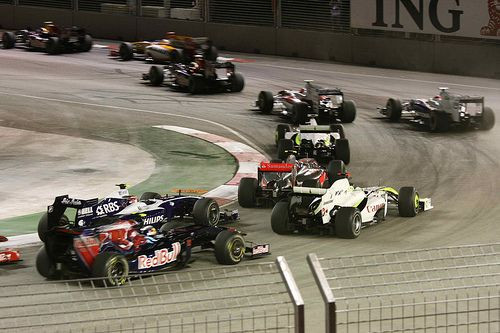Study Explains How AML Cancer Cells Survive Chemotherapy

A new study explains how chemotherapy slows down cancer cells and how acute myeloid leukemia survives chemotherapy.
“Introducing chemotherapy to cells is like putting a curve in front of a speeding car,” says study author Christopher Porter, MD, an investigator at the University of Colorado Cancer Center and assistant professor of pediatrics at the University of Colorado School of Medicine.
“Cells that can put on the brakes make it around the corner and cells that can’t speed off the track,” he wrote in a paper published in the journal Leukemia.
Researchers defined the braking process that Acute Myeloid Leukemia cells use to survive. They showed that some AML cells die in the corners when the brakes are removed. Some healthy neighboring cells are exceptions.
Porter and colleagues collaborated with James DeGregori, PhD, CU Cancer Center investigator and professor of biochemistry and molecular genetics at the CU School of Medicine.
Researchers said that the discovery of this “escape route and how to plug it” provides hope for survival for the estimated 12,950 people in the U.S. diagnosed with AML every year.
In determining which genes are especially susceptible to chemo, the researchers turned off a different gene in each of a population of AML cells all at once. They then hit all the cells with chemotherapy traditionally used for AML and found that cells that lacked a gene that makes WEE1 died in disproportionate numbers.
The authors explained that when you turn off WEE1 cancer cells die.
“WEE1 is the brakes,” Porter said.
“With chemotherapy we introduce DNA damage in cancer cells, we push them toward the curve hopefully at a greater rate than healthy cells. If WEE1 is there, cancer cells can round the curve. Without it, they flip.”
AML cells may be more dependent than are healthy cells on WEE1, the authors wrote.
In other words when chemotherapy is targeted at these cells, the AML cancer cells more dependent on WEE1 die in their tracks while their healthy neighbor cells are able to survive and push through the “corner on rails.”
“I’m optimistic that this will eventually lead to a therapeutic regimen that allows us to target AML cells that have escaped conventional therapies,” said Porter.
After calling the initial results combining a drug that inhibits WEE1 with chemotherapy in mouse models of AML, “extremely promising,” Porter said that in light of this data, they are already early in the clinical trial planning process.
Published by Medicaldaily.com



























